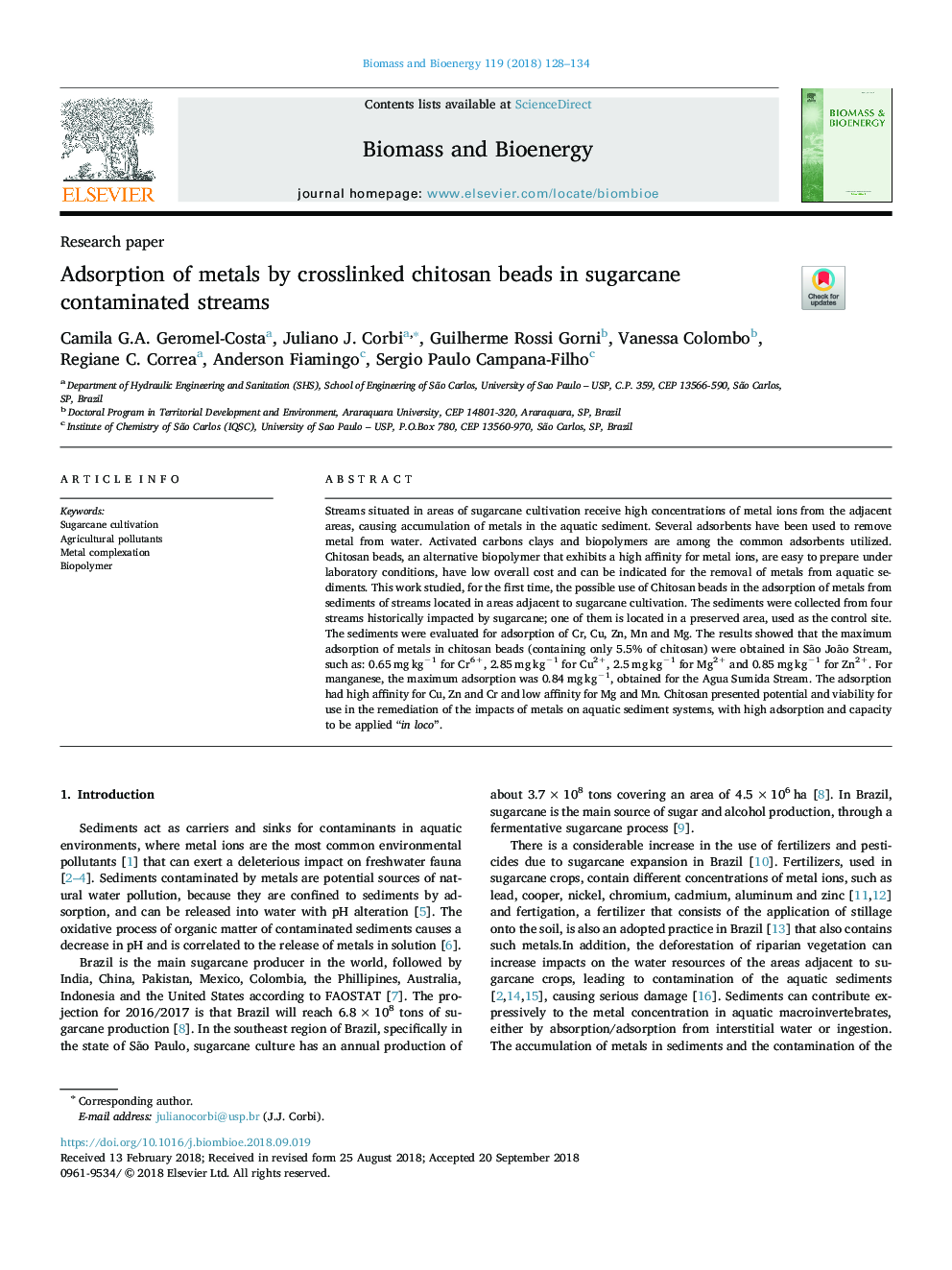| Article ID | Journal | Published Year | Pages | File Type |
|---|---|---|---|---|
| 11027906 | Biomass and Bioenergy | 2018 | 7 Pages |
Abstract
Streams situated in areas of sugarcane cultivation receive high concentrations of metal ions from the adjacent areas, causing accumulation of metals in the aquatic sediment. Several adsorbents have been used to remove metal from water. Activated carbons clays and biopolymers are among the common adsorbents utilized. Chitosan beads, an alternative biopolymer that exhibits a high affinity for metal ions, are easy to prepare under laboratory conditions, have low overall cost and can be indicated for the removal of metals from aquatic sediments. This work studied, for the first time, the possible use of Chitosan beads in the adsorption of metals from sediments of streams located in areas adjacent to sugarcane cultivation. The sediments were collected from four streams historically impacted by sugarcane; one of them is located in a preserved area, used as the control site. The sediments were evaluated for adsorption of Cr, Cu, Zn, Mn and Mg. The results showed that the maximum adsorption of metals in chitosan beads (containing only 5.5% of chitosan) were obtained in São João Stream, such as: 0.65â¯mgâ¯kgâ1 for Cr6+, 2.85â¯mgâ¯kgâ1 for Cu2+, 2.5â¯mgâ¯kgâ1 for Mg2+ and 0.85â¯mgâ¯kgâ1 for Zn2+. For manganese, the maximum adsorption was 0.84â¯mgâ¯kgâ1, obtained for the Agua Sumida Stream. The adsorption had high affinity for Cu, Zn and Cr and low affinity for Mg and Mn. Chitosan presented potential and viability for use in the remediation of the impacts of metals on aquatic sediment systems, with high adsorption and capacity to be applied “in loco”.
Related Topics
Physical Sciences and Engineering
Chemical Engineering
Process Chemistry and Technology
Authors
Camila G.A. Geromel-Costa, Juliano J. Corbi, Guilherme Rossi Gorni, Vanessa Colombo, Regiane C. Correa, Anderson Fiamingo, Sergio Paulo Campana-Filho,
